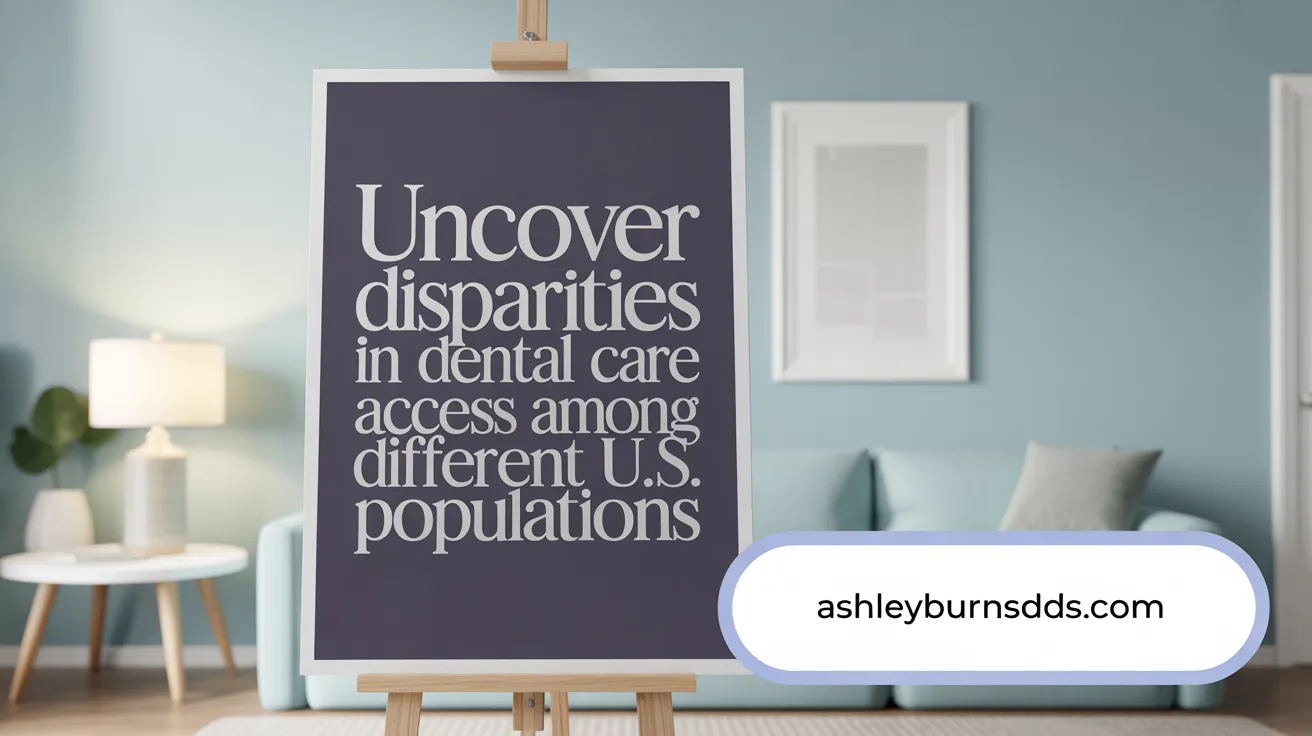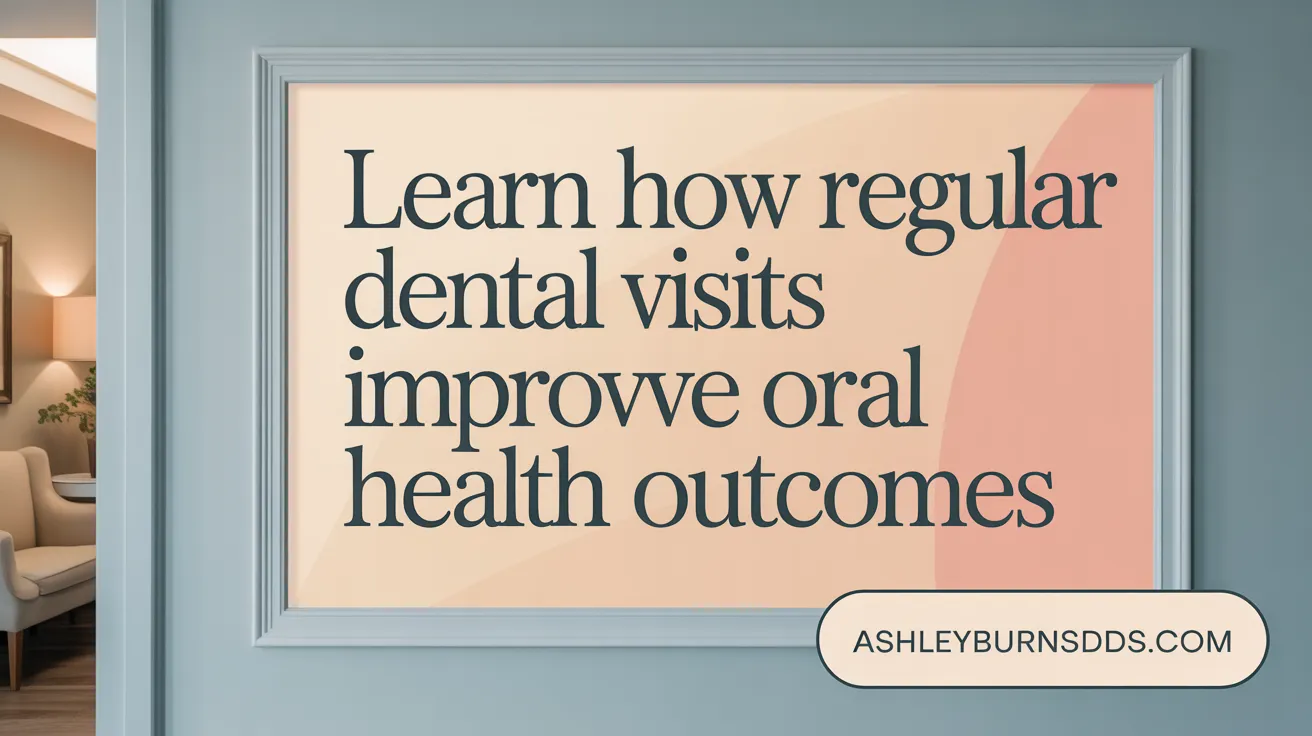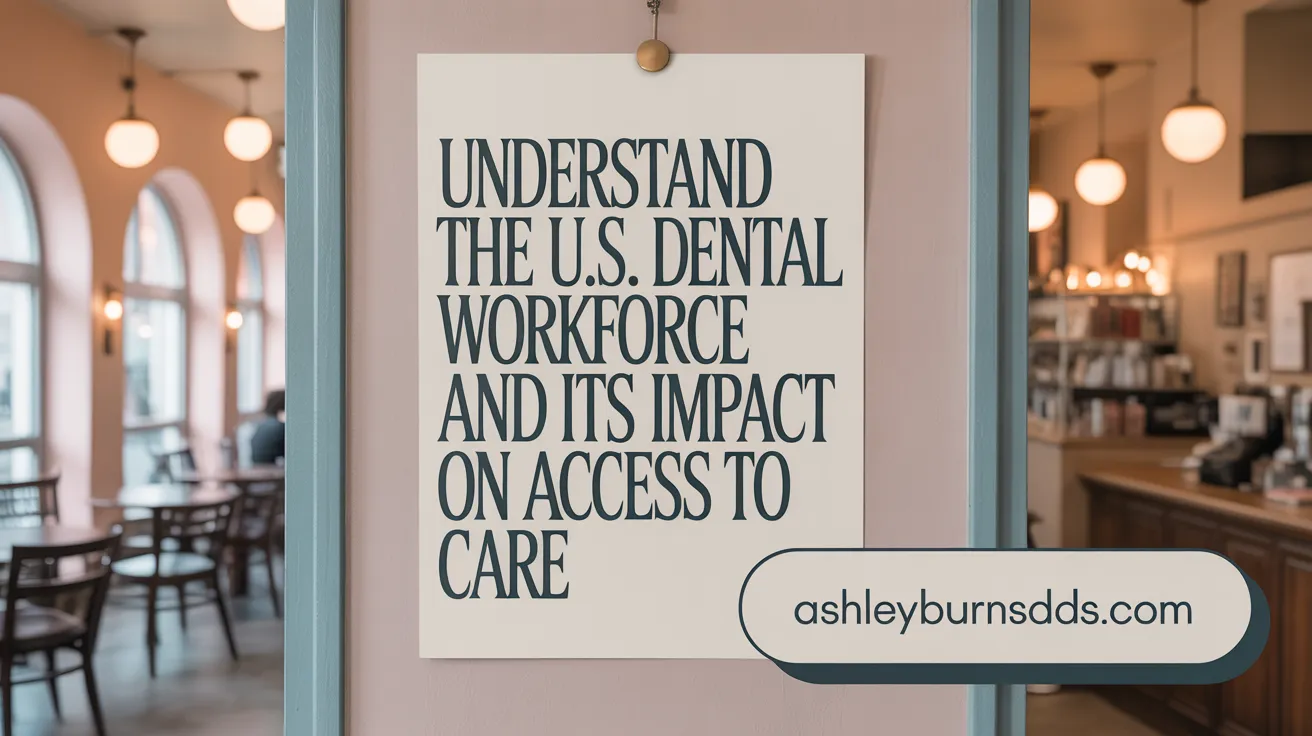Understanding Who Accesses Dental Care and Why It Matters
Dental health is a vital component of overall well-being, yet access and utilization of dental services in the United States reveal complex patterns influenced by demographic and socioeconomic factors. This article explores the latest statistics on dental care usage, highlighting who is visiting the dentist and who is not, as well as the underlying disparities and consequences for oral health outcomes. Drawing on comprehensive national data and research findings, we examine trends across different age groups, races, and income levels, alongside workforce insights and the impact of insurance coverage. This overview seeks to illuminate the challenges and opportunities to improve dental service utilization and reduce oral health inequities.
Current Trends and Usage Patterns in U.S. Dental Services

What are the current statistics and trends in dental service usage in the United States?
In 2022, approximately 45% of the U.S. population reported having a dental visit within the past year. Usage rates are notably higher among children and seniors, with 86.9% of children aged 2–17 and about 50% of adults aged 65 and older taking advantage of dental services. In contrast, only around 39% of adults aged 19–64 visited a dentist in that period (Oral and dental health statistics).
Despite the overall engagement, recent shifts reveal a decline in dental visits during 2020, largely due to the COVID-19 pandemic. To illustrate, the percentage of adults aged 18–64 who had a dental visit decreased from 65.5% in 2019 to 62.7% in 2020 (Dental care utilization among adults 18-64). Similarly, expenditures on dental care reached $174 billion in 2023, showing a slight increase from previous years, but the pandemic caused a temporary drop in costs and utilization (Dental care market overview).
Oral health disparities remain prevalent, with racial and income-based gaps still evident. Lower-income groups and Hispanic populations face more significant barriers such as affordability and access issues (Health Disparities in Oral Health). Common reasons for avoiding care include cost concerns, fear, and scheduling difficulties (Dental care usage in the US 2021). Overall, the data indicates a trend of partial recovery post-pandemic and ongoing efforts to address inequalities in dental health service utilization.
Demographic Disparities in Dental Care Access and Utilization

What disparities exist in dental health access and utilization among different populations?
Disparities in dental health access and use are evident across multiple demographic groups in the United States. Socioeconomic status, race and ethnicity, geographic location, and insurance coverage significantly influence who receives regular dental care. Vulnerable populations, such as low-income individuals and racial or ethnic minorities, often face substantial barriers to accessing preventive and treatment oral health services (Health Disparities in Oral Health.
Research shows that untreated dental caries are almost three times more common among children aged 2 to 5 living in low-income households (18%) compared to higher-income households (7%) (Children with untreated or restored dental caries (2017-2020). Similarly, adult low-income populations experience periodontal diseases twice as frequently as higher-income groups (Oral health disparities and influencing factors. Racial disparities are also prominent: approximately 70% of Mexican American children aged 6 to 9 have had cavities, contrasted with 43% of non-Hispanic White children (Dental visits by racial and Hispanic-origin groups.
Geographic factors further exacerbate these disparities. A significant portion of rural areas, accounting for roughly 57 million Americans, are designated as dental health professional shortage areas (HPSAs) (Dental Health Professional Shortage Areas statistics). This shortage results in fewer dental visits and poorer oral health outcomes for rural residents (Dental care access in metropolitan areas. The absence of nearby providers leads to increased untreated dental problems, including cavities and periodontal disease (Oral health disparities in uninsured adults.
Insurance coverage is a pivotal determinant. Individuals lacking dental insurance or enrolled in Medicaid, especially adults, are much less likely to seek routine care. For instance, only about 20% of adult Medicaid enrollees utilize dental services annually, compared to higher rates among privately insured persons (Medicaid Dental Service Utilization).
In summary, disparities driven by socioeconomic, racial, geographic, and insurance factors contribute to uneven access and utilization of dental care. These differences translate into higher disease rates among underserved groups, underscoring the need for targeted policies to bridge these oral health gaps (Dental Care Utilization Among Adults Aged 18−64.
The Impact of Dental Attendance on Oral Health Outcomes

How are dental health outcomes related to service usage and attendance behavior?
Dental health outcomes are strongly associated with the frequency and regularity of dental service utilization. Research from multiple countries, including Australia, Sweden, and New Zealand, shows that individuals who attend the dentist regularly—ideally within a 12-month period—tend to have lower levels of dental caries, fewer missing teeth due to decay, and better overall oral health-related quality of life (Impact of dental visiting patterns on oral health).
Long-term observational studies emphasize that consistent routine dental visits contribute to improved clinical outcomes, such as lower DMFT (decayed, missing, and filled teeth) scores and fewer untreated decay cases. Participants who maintain regular dental attendance from adolescence through early adulthood often display better oral health indicators, including fewer caries and less tooth loss. They also rate their oral health more favorably, highlighting the benefits of preventive care (Long-term dental visiting patterns).
Socioeconomic and psychological factors significantly influence attendance behavior. Higher income, better education, and greater oral health literacy are linked to more frequent visits. Conversely, barriers such as dental anxiety, perceived costs, and lack of awareness can decrease participation in routine dental care. Targeted interventions, including education and access programs, can help mitigate these barriers and promote regular attendance (Impact of dental visiting patterns on oral health.
Irregular or infrequent dental visits are associated with poorer oral health outcomes. These individuals are more likely to experience higher rates of untreated cavities, periodontal disease, and tooth loss. Moreover, delayed treatment often results in more complex and costly procedures later on, underscoring the need for early and consistent preventive care. Overall, fostering regular dental service use is crucial for maintaining optimal oral health and preventing disease progression (Long-term dental visiting patterns.
Dental Workforce Landscape and Access Implications

What workforce-related data exist, including the number of practicing dentists and the dentist-to-population ratio?
Current data indicates that there are approximately 202,485 practicing dentists in the United States as of 2024. These professionals encompass general practitioners, specialists, and other dental personnel. The ratio of dentists to the total U.S. population stands at about 59.5 per 100,000 residents, although this figure varies significantly across regions and between urban and rural areas [[Dentists per 10,000 population](https://www.who.int/data/gho/data/indicators/indicator-details/GHO/dentists-(per-10-000-population)]Dentist demographics in the United States]Yearly patient visits per dentist U.S. 1990-2023].
Demographic details reveal that most dentists are male, over age 45, and predominantly white, practicing mainly in private settings. There is a notable increase in the number of dental hygienists and assistants, with many working part-time, reflecting shifting workforce dynamics. The number of dental professionals has grown steadily over decades, yet the overall density is decreasing slightly due to rising population sizes and ongoing shortages Dentist demographics in the United States]Increase in dental personnel from 1950 to 2012].
Dentist-to-population ratios nationally and regionally
Nationwide, the distribution of dentists is uneven, with some states experiencing high density while others face shortages. For example, in some counties, the ratio exceeds 2,500 residents per dentist, whereas in underserved areas, a single dentist may serve over 4,000 residents [Ratio of population to dentists]Dentist demographics in the United States].
Regional disparities are especially stark in rural and frontier areas. Over 10,000 Dental Health Professional Shortage Areas (HPSAs) currently affect more than 59 million residents, many in rural communities. These regions often have significantly lower dentist-to-population ratios, impacting access to routine and emergency dental care [Dental Health Professional Shortage Areas]Access to dental care barriers]Dental Health Professional Shortage Areas growth].
Workforce shortage areas and their impact on access
The existence of over 10,000 HPSAs underscores a critical barrier to equitable dental care access. In these areas, residents often face long travel distances, limited provider availability, and reduced service options. Consequently, many turn to emergency departments for dental issues, which is inefficient and lacks preventive care Access to dental care barriers]Health Disparities in Oral Health].
Addressing these shortages involves increasing the number and distribution of dental professionals, including encouraging practice in underserved areas and expanding the roles of auxiliary and nondental health workers. Federal and state policy initiatives, such as funding incentives and expanded scope of practice, aim to mitigate these disparities Dental Health Professional Shortage Areas growth]Medical and dental visits in 2019].
Trends in dental personnel growth and future projections
Over the past decades, the dental workforce has increased markedly, with dental hygienists and assistants growing rapidly. The number of dental hygienists alone was around 190,000 in 2012, with projections suggesting a 30% employment growth through 2030 Dentist demographics in the United States]Increase in dental personnel from 1950 to 2012].
While the total number of dentists continues to rise, the growth rate is slowing, and the workforce is aging. Many current practitioners are nearing retirement, especially among baby boomers. Future projections estimate that the number of practicing dentists will continue to grow until at least 2040, but the per capita density may decline without targeted efforts Increase in dental personnel from 1950 to 2012]Long-term dental visiting patterns].
This demographic shift emphasizes the importance of integrating nondental health professionals into oral health care delivery and increasing educational pipeline capacity. Overall, understanding these workforce trends is vital for planning strategies to improve access, reduce shortages, and meet the evolving oral health needs of the U.S. population Dental Health Professional Shortage Areas growth]Oral health disparities and influencing factors].
Dental Expenditures and the Role of Insurance in Service Utilization

What are the trends in dental care expenditures and how does insurance coverage impact service utilization?
Dental care spending in the United States has shown a steady upward trajectory. In 2023, the total expenditure reached approximately $174 billion, reflecting a 2.5% increase from the previous year. Historically, expenditures have shifted toward more complex and adult-oriented dental procedures, although preventive and basic care still constitute a significant component of overall costs (Dental Care Market Overview.
Insurance plays a crucial role in dental service utilization. Private dental insurance coverage has become more common, with about 61% of adults and a similar proportion of children reportedly covered. Despite this growth, a large portion of dental expenses—around 77%—are paid directly out-of-pocket, which remains a significant barrier for many, especially adults and low-income populations (National Trends in Dental Care Use.
Public funding, mainly through Medicaid, accounts for a smaller and decreasing share of dental expenditures. Medicaid's dental benefits are mandatory for children but optional for adults, leading to disparities in access. States vary considerably in their coverage, with some offering extensive benefits and others providing just emergency care. This variation influences utilization rates, with children in some states receiving regular preventive services, while adult utilization remains low (Variation in Use of Dental Services by Children and Adults Enrolled in Medicaid or CHIP.
Data indicates that individuals with private insurance or Medicaid coverage are significantly more likely to seek dental care. For example, children with Medicaid or CHIP are more likely to have a dental visit annually compared to uninsured children. However, economic barriers persist, as the high out-of-pocket costs for uninsured or underinsured populations prevent many from receiving routine care (Dental Care Utilization in the U.S..
In sum, while dental care expenditure continues to grow alongside increasing insurance coverage, gaps remain largely due to limited coverage scope and high costs for the uninsured. These factors contribute to ongoing disparities in dental service access and utilization across different demographic groups (Dental Care Disparities by Race and Income.
Barriers, Behavioral Factors, and Strategies to Enhance Dental Care Uptake
What common barriers prevent people from seeking dental care?
Many individuals face obstacles such as high costs, fear of dental procedures, and limited accessibility. Cost remains the top reason adults cite for avoiding dental visits, with about 13% experiencing financial barriers. Transportation issues, lack of nearby providers, and inconvenient appointment times further hinder access, especially in rural areas where nearly 67% of Americans live in dental health professional shortage areas.
How do social and economic factors influence dental service utilization?
Social determinants like income, education level, and race play significant roles. Low-income populations, including children and adults, experience a higher prevalence of untreated cavities and dental disease. For instance, untreated cavities are almost three times more common in children from low-income households. Minority groups such as Black and Hispanic populations also face disparities, with higher rates of unmet dental needs and barriers caused by limited insurance coverage and lower availability of culturally competent providers (Oral Health Disparities.
In what ways do behavioral and attitudinal factors affect dental attendance?
Personal attitudes, traditional beliefs, fear, and previous negative experiences influence whether individuals seek care regularly. Parental attitudes significantly impact children's dental visits, with positive perceptions increasing utilization. Adults with regular positive health behaviors, like brushing and flossing, are more likely to attend routine check-ups, which are crucial for prevention and early intervention (Dental Attendance and Oral Health.
What strategies and policy initiatives are emerging to improve dental care access?
Interventions such as integrating oral health education in primary care, expanding Medicaid and public insurance benefits, and deploying mid-level dental providers aim to bridge access gaps. Policies supporting increased workforce diversity, community-based dental programs, and better reimbursement rates for providers serving underserved populations are also underway. These measures, coupled with federal efforts to reduce disparities, are essential for promoting equitable dental health outcomes (Variation in Use of Dental Services in Medicaid.
This comprehensive approach highlights the importance of addressing multifaceted barriers and leveraging policy and behavioral interventions to enhance dental care uptake across all population groups (National Trends in Dental Care Use.
Bridging the Gap: Improving Dental Service Utilization Nationwide
Understanding the statistical landscape of dental services usage in the United States reveals significant trends and disparities shaped by demographics, socioeconomic status, insurance coverage, and access to care. Despite high awareness and the importance of oral health, many populations remain underserved due to financial, geographic, and systemic barriers. Regular dental attendance is linked with better oral health outcomes, underscoring the need for concerted efforts to promote consistent care. Enhancing dental workforce distribution, expanding affordable insurance coverage, and addressing behavioral and structural obstacles are critical strategies. Policymakers, healthcare providers, and communities must collaborate to ensure equitable access and participation in dental care, ultimately improving oral health equity and quality of life for all Americans.
